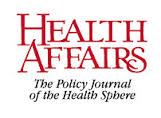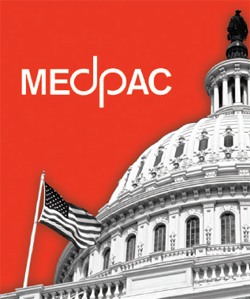Safety-Net Hospitals’ Readmissions Challenge
The March edition of the journal Health Affairs offers a compelling snapshot of a type of patient many safety-net hospitals serve on an almost daily basis: the “superutilizer” who lacks the ability and resources to address his own medical needs.
The article “Mr. G And The Revolving Door: Breaking The Readmission Cycle At A Safety-Net Hospital” tells the story of a patient who
…had been using drugs and alcohol since his teenage years, and he was addicted to crack cocaine and alcohol…He had been released from prison six months before we first met him, without any basic resources to help him transition back into society – not even a state ID. Lacking this fundamental necessity, he could not apply for state health insurance or a Supplemental Nutrition Assistance Program card to receive food stamps. As an ex-felon with no income, he couldn’t find a place to live. He told us he was living on the streets, where he spent his days panhandling and using the money he got to buy tacos from street vendors and hash browns from McDonald’s.
Mr. G’s first several admissions to our hospital were similar. He would walk into the emergency department, unable to breathe, and would be admitted to the hospital for treatment related to heart failure. He had a complex medical history including diabetes and extremely poor heart function – which was complicated by a clot in his heart that required the chronic use of blood thinners. Furthermore, he suffered from schizophrenia.
 The hospital faced a problem in addition to caring for Mr. G.
The hospital faced a problem in addition to caring for Mr. G.
The problem with Mr. G’s admissions, aside from their drain on hospital resources, is that to motivate hospitals to improve care, Medicare penalizes hospitals for certain patients who are readmitted within thirty days. This policy assumes that all patients have the means and internal resources to care for themselves effectively and that hospitals, by simply adhering to best practices of medical management, can avoid redundant care. Medicare fails to consider the complications imposed by poverty and the significant burden safety-net hospitals face in trying to address overwhelming social issues.
A typical admission was set in motion by Mr. G’s nonadherence to his medications, poor diet, substance abuse, or a combination of the three. With each admission, additional problems and complications cropped up that extended his stay.
The problems continue, and the article explains that
Patients like Mr. G frustrate health care providers. These patients are often dismissed as being nonadherent, and their psychosocial needs go unrecognized. Their daily challenges are compounded by poverty, mental illness, substance abuse, lack of social support, lack of transportation, and unstable housing. These factors – and other social determinants of health – set the stage for poor health outcomes in patients with low socioeconomic status.
The article concludes by noting that
Current health care policy emphasizes the reduction of readmissions but does not support the time and resources needed to achieve this goal. As the basis for payment shifts from volume to value, it will become exceedingly expensive to continue ignoring the social determinants of health.
To learn more about Mr. G, the hospital that served him, and the challenges Pennsylvania’s safety-net hospitals face when serving patients CMS has labeled “superutilizers,” go here, to the web site of the journal Health Affairs, to see the complete article “Mr. G And The Revolving Door: Breaking The Readmission Cycle At A Safety-Net Hospital.”







